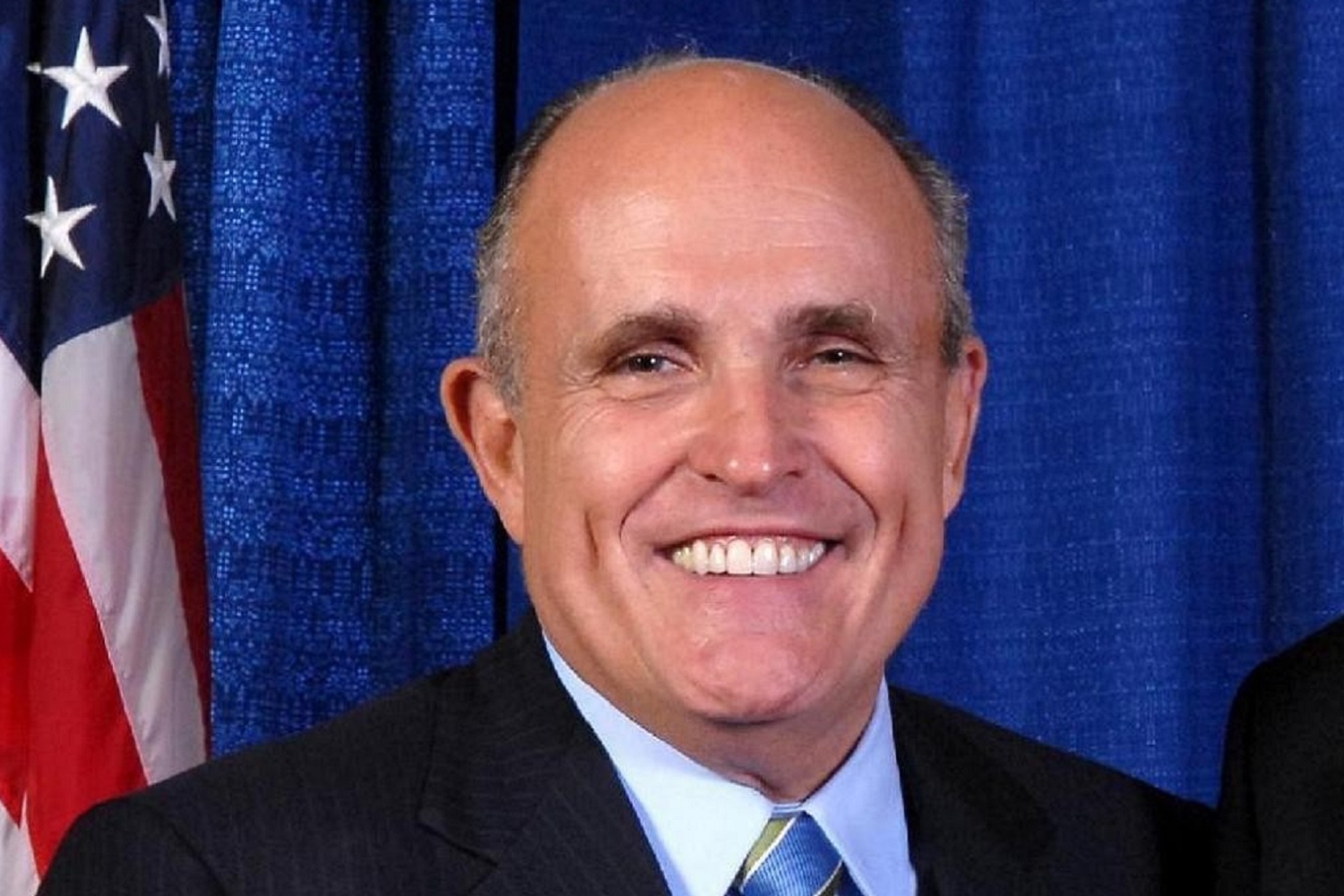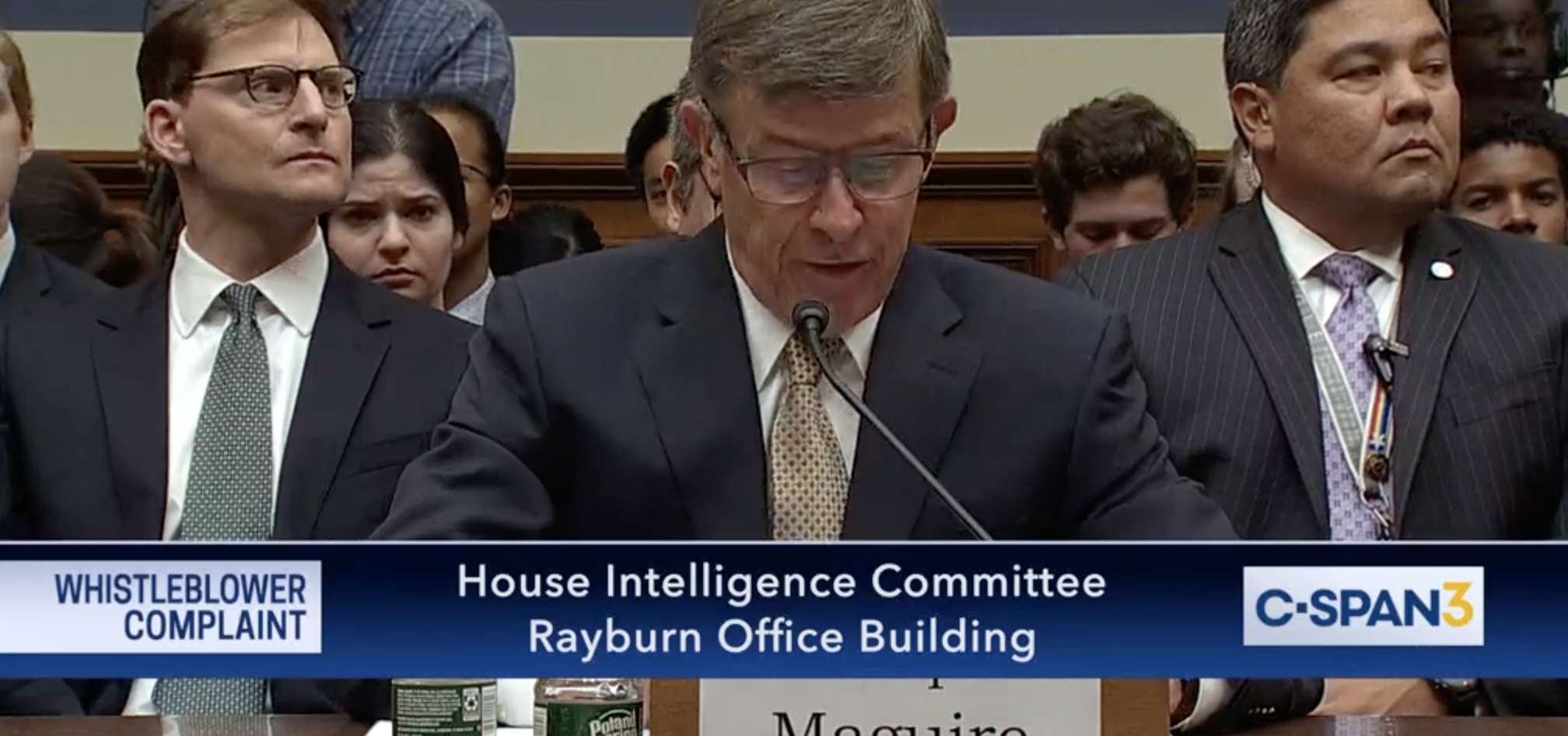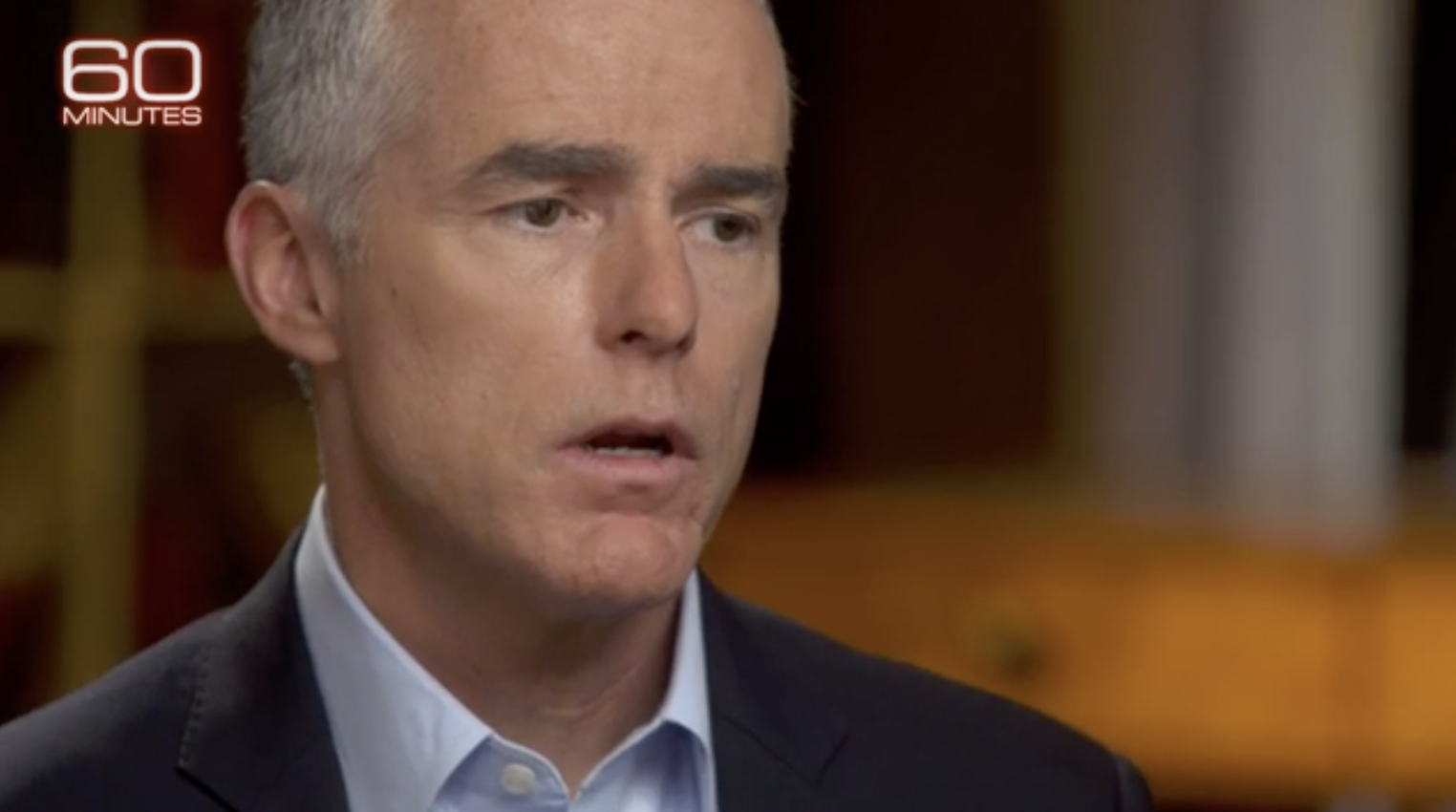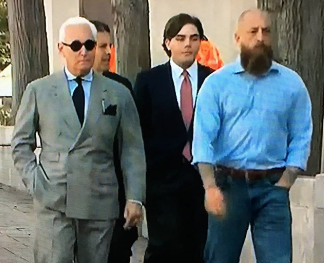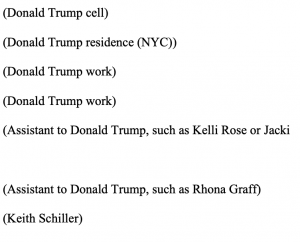Bill Barr Risks becoming Joseph Mifsud’s New Coffee Boy
Yesterday, the Daily Beast provided details about what Bill Barr was doing in Italy on the trip to dig up dirt first confirmed by the WaPo. According to DB, Barr and John Durham went to Italy on short notice (that is, even as the Ukraine scandal he is personally implicated in was breaking) to watch a videotaped deposition by Joseph Mifsud.
Barr was in Rome on an under-the-radar mission that was only planned a few days in advance. An official with the embassy confirmed to The Daily Beast that they had to scramble to accommodate Barr’s sudden arrival. He had been in Italy before, but not with such a clear motive. Barr and Durham are looking into the events that led to Robert Mueller’s Russia investigation, and suddenly all roads were leading to Rome.
The Daily Beast has learned that Barr and Durham were especially interested in what the Italian secret service knew about Joseph Mifsud, the erstwhile professor from Malta who had allegedly promised then-candidate Donald Trump’s campaign aide George Papadopoulos he could deliver Russian “dirt” on Hillary Clinton. The Italian justice ministry’s public records show that Mifsud had applied for police protection in Italy after disappearing from Link University, where he worked and, in doing so, had given a taped deposition to explain just why people might want to harm him.
A source in the Italian Ministry of Justice, speaking on the condition of anonymity, told The Daily Beast that Barr and Durham were played the tape. A second source within the Italian government also confirmed to The Daily Beast that Barr and Durham were shown other evidence the Italians had on Mifsud.
There are a ton of reasons why this trip is batshit crazy. For one, Barr is placing himself in the role of a line Special Agent, someone without the requisite expertise chasing off to watch taped depositions while he should be running DOJ. For another (as I’ll show in more detail later), Barr is literally just chasing conspiracy theories sown by sworn liar George Papadopoulos, conspiracy theories which fabulist John Solomon (and his obvious sources named Rudy Giuliani and some Russian and Ukrainian oligarchs including Oleg Deripaska) has both fed and magnified. That Barr is doing it as he becomes personally embroiled in a scandal which could implicate him criminally suggests he and Trump may be trying to beat the clock, produce results before the shit really hits the fan.
But what’s most remarkable about the trip is the Attorney General of the United States went out on this goose chase without first ensuring he’d get what he was promised.
There’s a principle often aired when discussing Trump’s failed diplomacy with North Korea. You don’t send out the Principal for a meeting before getting certain commitments that advance your own goals. Trump should not have met with Kim Jong-Un without first getting concessions, because by doing so he took away several things of value (such as conferring credibility on the world stage) that Kim was most interested in.
The same is true here. The Attorney General should never run off to do the work of an FBI line Special Agent. But he certainly shouldn’t do so unless he was getting what he was really after.
And Billy Barr just flew to Italy without getting what he was really looking for.
Handily, for this scandal, Papadopoulos and Solomon and Chuck Ross have been ready scribes for the script that Trump and Billy Barr are supposed to be following. It’s all out in the open.
The Attorney General’s voyage to Italy got set in motion last fall when Ross published two stories relying on Mifsud’s “attorney” Stephen Roh (who himself has close ties to Russia). The first, dated September 10, reported that Mifsud was alive and well hiding in Italy. The second, published October 24, was explicitly a set-up for George Papadopoulos’ testimony before the joint OGR/HJC investigation into the Russian investigation. It included comments from Roh alleging that Mifsud was not a Russian asset, but was instead a Western one. Ross included those comments almost as a side note, even though the comments make what would normally be big news.
Roh told TheDCNF this week that Mifsud claimed in their previous meetings that he was working under the direction of the FBI when he made contact with Papadopoulos. He also claims that Mifsud told him that he was ordered to stay out of the public spotlight until the conclusion of special counsel Robert Mueller’s investigation.
“Prof Mifsud explained that he is and was always a trusted cooperator of Western Intelligence services,” Roh said on Oct. 20.
“Prof Mifsud explained to us that he agreed not to speak, not to give interviews and to hide until the [Mueller] Investigation is terminated,” said Roh, who added that Mifsud claimed that he was being assisted by a London law firm in his discussions with the Mueller team.
The claims, if true, would be bombshell developments in the Russiagate saga. But TheDCNF was not able to independently verify Roh’s claims. The special counsel’s office declined comment.
While some of Roh’s claims about Mifsud would seem to support Papadopoulos’s theories, Roh has also said that Mifsud denies Papadopoulos’s allegation that he mentioned Clinton emails during their April 2016 meeting. Roh has asserted that Papadopoulos was working as an “agent provocateur” for a Western spy agency.
The next day, Papadopoulos — cued by Zachary Somers, then Majority Counsel for Bob Goodlatte — pointed to the Daily Caller piece as the basis for his belief that Joseph Mifsud was actually western intelligence.
Q Okay. So, and Mifsud, he presented himself as what? Who did he tell you he was?
A So looking back in my memory of this person, this is a mid-50’s person, describes himself as a former diplomat who is connected to the world, essentially. I remember he was even telling me that, you know, the Vietnamese prime minister is a good friend of mine. I mean, you have to understand this is the type of personality he was portraying himself as.
And, you know, I guess I took the bait because, you know, usually somebody who — at least in Washington, when somebody portrays themselves in a specific way and has credentials to back it, you believe them. But that’s how he portrayed himself. And then I can’t remember exactly the next thing that happened until he decided to introduce me to Putin’s fake niece in London, which we later found out is some sort of student. But I could get into those details of how that all started. Q And what’s your — just to kind of jump way ahead, what’s your current understanding of who Mifsud is?
A My current understanding?
Q Yeah. A You know, I don’t want to espouse conspiracy theories because, you know, it’s horrifying to really think that they might be true, but just yesterday, there was a report in the Daily Caller from his own lawyer that he was working with the FBI when he approached me. And when he was working me, I guess — I don’t know if that’s a fact, and I’m not saying it’s a fact — I’m just relaying what the Daily Caller reported yesterday, with Chuck Ross, and it stated in a categorical fashion that Stephan Roh, who is Joseph Mifsud’s, I believe his President’s counsel, or PR person, said that Mifsud was never a Russian agent.
In fact, he’s a tremendous friend of western intelligence, which makes sense considering I met him at a western spying school in Rome. And all his interactions — this is just me trying to repeat the report, these are not my words — and when he met with me, he was working as some sort of asset of the FBI. I don’t know if that’s true or not. I’m just reporting what my current understanding is of this individual based on reports from journalists.
As I’ll show, this was not the only time Papadopoulos did this in a deposition that was supposed to air what Papadopoulos knew, personally. His testimony served to validate conspiracy theories planted in right wing propaganda outlets.
In May Devin Nunes, in the guise of raising counterintelligence concerns about the number of high level people (including Boris Johnson, who would not be Prime Minister of the UK right now without dodgy financing of Leave) who had interacted with Mifsud, wrote a letter airing Roh’s claims and information that otherwise has been sourced from Roh, wrote Mike Pompeo, Paul Nakasone, Gina Haspel, and Chris Wray claiming Mueller misrepresented Mifsud.
Alternatively, if Mifsud is not in fact a counterintelligence threat, then that would cast doubt on the Special Counsel’s fundamental description of him and his activities, and raise questions about the veracity of the Special Counsel’s statements and affirmations. It should be noted that the Special Counsel declined to charge Mifsud with any crime even though, to justify seeking a prison sentence for Papadopoulos, the Special Counsel claimed Papadopoulos’ untruthful testimony “undermined investigators’ ability to challenge the Professor [Mifsud] or potentially detain or arrest him while he was still in the United States.” Furthermore, it’s still a mystery how the FBI knew to ask Papadopoulos specifically about Hillary Clinton’s emails, on multiple occasions throughout 2016-17 before having interviewed Mifsud, if the FBI hadn’t already somehow received this information directly or indirectly from Mifsud himself.
Obviously, Nunes’ “concerns” are rank bullshit. The tip from Australia was sufficient to raise question about the emails. And Mueller didn’t charge a bunch of other suspected foreign assets (some even in the US), which is how counterintelligence works. But Nunes’ letter sufficed to make this an official request.
Apparently, then, Stephen Roh shared a transcript of a deposition with some Republicans in Congress and Solomon. That, and more cues from Republicans, Roh, Papadopoulos, and who knows who else, got laundered through a Solomon story full of obvious misrepresentations (one that irks me, for example, is his use of a February 2017 email Mifsud sent following up on his FBI interview to claim Mifsud exchanged emails with the FBI, as if that substantiated an otherwise independent relationship with the Bureau). The news hook of the story is that John Durham wanted to interview Mifsud. But if he couldn’t do that, Solomon dutifully reported, Durham would like to “review a recorded deposition” he gave to Roh.
An investigator told Swiss attorney Stephan Roh that Durham’s team wanted to interview Mifsud, or at the very least review a recorded deposition the professor gave in summer 2018 about his role in the drama involving Donald Trump, Russia and the 2016 election.
The contact, confirmed by multiple sources and contemporaneous email, sent an unmistakable message: Durham, the U.S. attorney handpicked by Attorney General William Barr to determine whether the FBI committed abuses during the Russia investigation, is taking a second look at one of the noteworthy figures and the conclusions of former special counsel Robert Mueller’s final report.
Solomon went on to claim — and the frothy right believes it as scripture now — that if Durham would just interview Mifsud, he would learn that the whole Papadopoulos story was actually a set-up by Western intelligence agencies seeking to frame George Papadopoulos and Donald Trump.
Roh told me the information he is preparing to share with Durham’s team from his client will accentuate those concerns.
Mifsud was a “longtime cooperator of western intel” who was asked specifically by his contacts at Link University in Rome and the London Center of International Law Practice (LCILP) — two academic groups with ties to Western diplomacy and intelligence — to meet with Papadopoulos at a dinner in Rome in mid-March 2016, Roh told me.
A May 2019 letter from Nunes to U.S. intelligence officials corroborates some of Roh’s account, revealing photos showing that the FBI conducted training at Link in fall 2016 and that Mifsud and other Link officials met regularly with world leaders, including Boris Johnson, elected today as Britain’s new prime minister.
A few days after the March dinner, Roh added, Mifsud received instructions from Link superiors to “put Papadopoulos in contact with Russians,” including a think tank figure named Ivan Timofeev and a woman he was instructed to identify to Papadopoulos as Vladimir Putin’s niece.
Mifsud knew the woman was not the Russian president’s niece but, rather, a student who was involved with both the Link and LCILP campuses, and the professor believed there was an effort underway to determine whether Papadopoulos was an “agent provocateur” seeking foreign contacts, Roh said.
The evidence, he told me, “clearly indicates that this was not only a surveillance op but a more sophisticated intel operation” in which Mifsud became involved.
The point is, though, that the ask was an interview, at which Barr and Durham (and, if they had brought experienced interrogators, which the DB does not report they did) would be able to test Mifsud’s credibility. Sitting in a secure room and watching a deposition (without experts there to test the provenance of the deposition video, no less) was not the ask and provides no way to obtain what would really be necessary.
But Barr didn’t demand that, and he didn’t get that. Instead, he allowed himself to be lured into a dark room in Italy to watch something — possibly without anyone with the relevant counterintelligence expertise to help him understand it — that provides very little useful information to test Mifsud’s claims. That puts the Attorney General in an incredibly vulnerable position (even beyond being implicated in covering up the President’s extortion to get such access), because he not only has traded away a lot of leverage to get what he would actually need to test this information, but he has already met a suspected Russian asset on the asset’s terms.
A lot of what Papadopoulos has done over the last three years was downright idiotic. But he has the excuse of being stupid, untrained, venal, and overly ambitious.
Billy Barr has no excuses for doing something that is even stupider than much of what Papadopoulos did. And yet he did just that.



